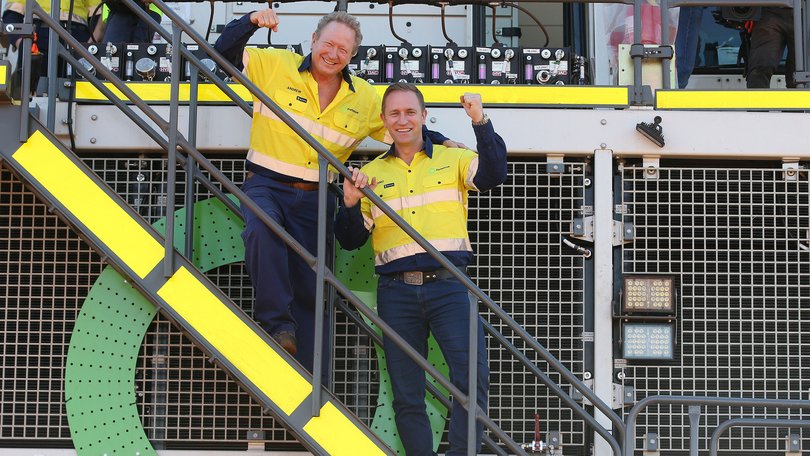Fortescue to sack hundreds in the UK, Australia as it confirms British media reports of green truck retreat

Fortescue is set to fire hundreds of employees in the UK and Australia as it offshores work to China and Germany while drastically scaling back plans to build renewable batteries in-house for mining trucks and equipment.
The mass cull of workers at the UK-based Fortescue Zero business unit, said to be at least 200 of the division’s 1100-plus workforce, marks the latest leg of Fortescue’s retreat from its once-hyped green energy ambitions.
Fortescue wants to convert its diesel trucks to electric as part of a push to decarbonise its Pilbara iron ore mines by the end of 2030 — an ambitious target well ahead of its peers.
Sign up to The Nightly's newsletters.
Get the first look at the digital newspaper, curated daily stories and breaking headlines delivered to your inbox.
By continuing you agree to our Terms and Privacy Policy.More than $1 billion has been poured into Fortescue Zero, which has about 100 workers based in Australia — predominately Perth, since the iron ore miner acquired the business formerly called Williams Advanced Engineering in 2022.
Fortescue founder and executive Andrew Forrest told The Telegraph over the weekend that most of the relevant components to power the net zero trucks will now be made in China and Germany due to lower costs and faster delivery times.
“It’s senseless to compete (with the Chinese),” Mr Forrest reportedly said.
Fortescue Zero will scrap most of its current manufacturing activity in the UK and instead use the Oxfordshire site as a drawing board to come up with new designs for its renewable battery systems.
“To stay at the forefront of this acceleration and maintain our competitive edge, Fortescue is shifting emphasis from in-house manufacturing to research and development, ensuring innovation moves faster and remains unconstrained,” Fortescue chief executive of growth and energy Gus Pichot said in a statement today.
“This disciplined, focused and collaborative approach will ensure the fastest and most cost-efficient deployment of green technology, keeping Fortescue at the forefront of breakthrough innovations.
“Regrettably, the changes are likely to impact some of our workforce, with the majority of those potentially affected in the United Kingdom. This is never an easy decision, and Fortescue is dedicated to guiding the transition with compassion, respect and support.”
The company’s global ambitions to commercialise green hydrogen took a major blow in July with its two most advanced projects consigned to the scrapheap.
“Following a detailed review, Fortescue has determined that the Arizona hydrogen project in the United States and PEM50 Project in Gladstone, Australia will not proceed,” Fortescue stated at the time.
It booked a $US150m ($227m) write-down after binning the two projects.
The West in May revealed the $US150m Gladstone electrolyser manufacturing plant in Queensland was in serious doubt after 90 workers were laid off across the site and Fortescue’s Perth headquarters.
Mark Hutchinson quit as Fortescue’s green energy boss less than two weeks later.
The fresh job cuts at Fortescue Zero mark the biggest cull at the company since 700 workers were sacked last year.
White collar employees at Fortescue’s Perth headquarters bore the brunt of the purge.
Mr Forrest said that headcount reduction was to eliminate duplication between Fortescue’s core iron ore mining business and its green energy arm.
“It’s in community, it’s in government relations, it’s in HR, Fortescue people — it’s in all the, like, white collar jobs where there’s duplication between mining and energy,” he said at the time.
“It’s common sense that we bring them together . . . I’m a bloke that really likes to simplify things to keep them streamlined.”
